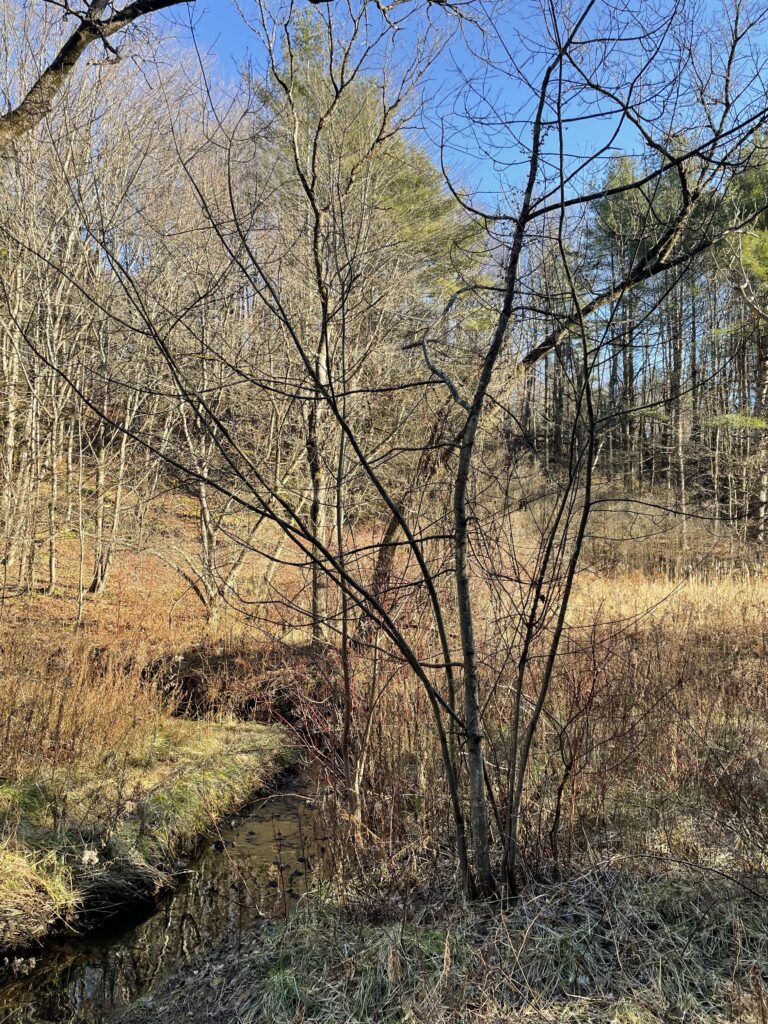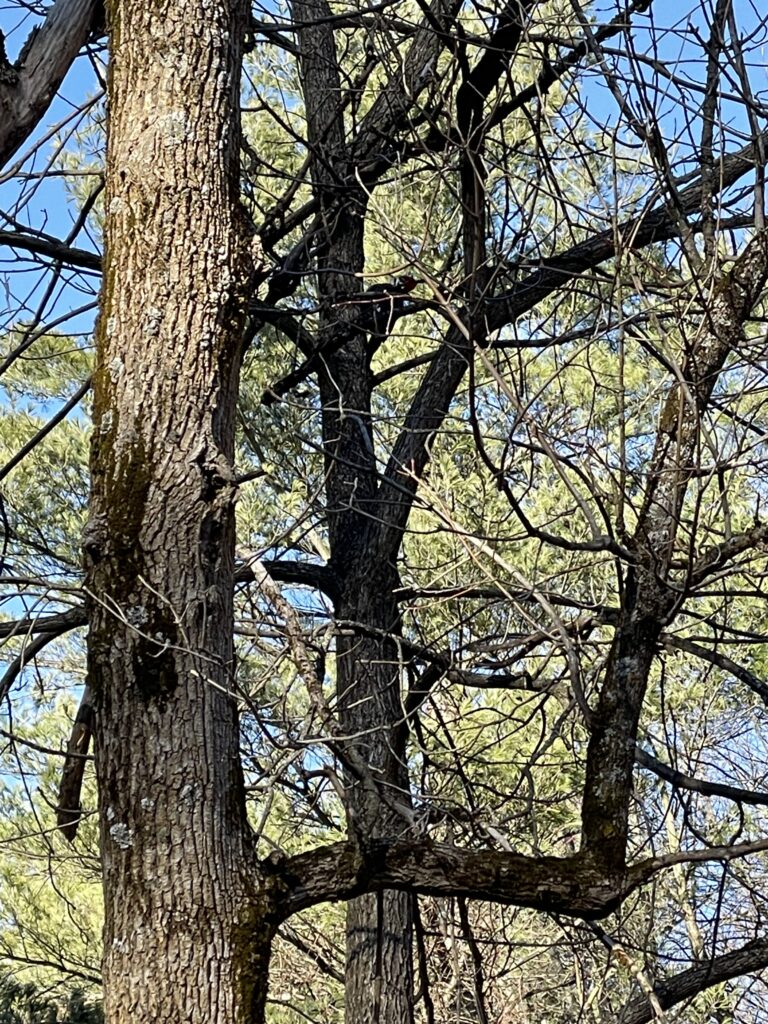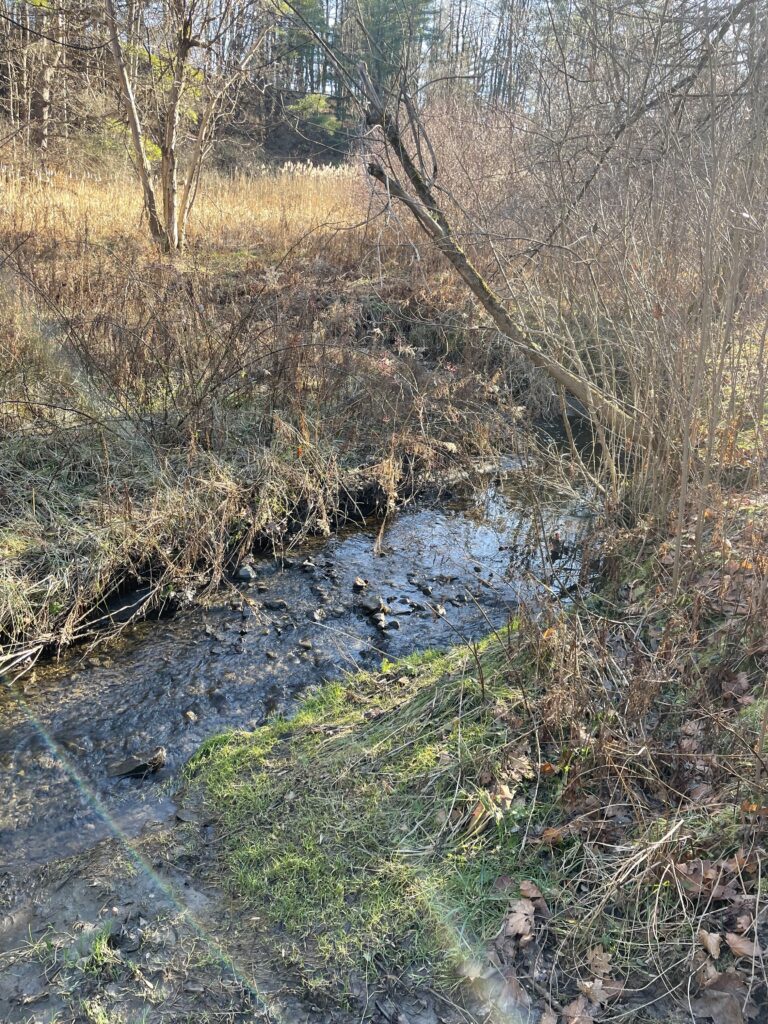When I returned to my phenology spot, I noticed that some things had changed. First, there was no color in the canopy; all the leaves had fallen off the trees. There was no foliage left as far as I could see. All that was left were the needles of the far-off conifers.

When I looked closely, I observed that there was a small tree that still had fruit on it. There were small red berries near the top of the tree. Because they were near the top and the tree had empty branches near the bottom, I am led to believe that some animal ate the low hanging berries. Other than this, the signs of animals were limited, although I did see two woodpeckers! I tried to get some pictures of them, but it was difficult since they were so far away, and also because someone came wandering into my phenology spot while talking very loudly, which scared the birds away. Animal activity in my spot has decreased significantly since the fall. Where there once used to be a chorus of bird calls, there is now silence.

The fall leaf litter has begun to decompose in my area. It is very muddy along the brook, and I think this has helped in decomposing the leaves a lot. The leaves have sunk into the mud and become buried, where they will provide nutrients for the soil and decomposers.
Of all the aspects of my phenology spot, the one I enjoy the most is the brook. When I first visited Centennial Woods looking for a special location, I knew as soon as I arrived that I would make this one mine. The brook was flowing loudly, and I thought that the noise that it provided was very calming. Watching the water flow over the rocks in the stream was relaxing and I could see the area being an essential one to a lot of wildlife because of the brook. My phenology spot is a beautiful section of Centennial Woods and I’m glad I got to explore it so deeply.
